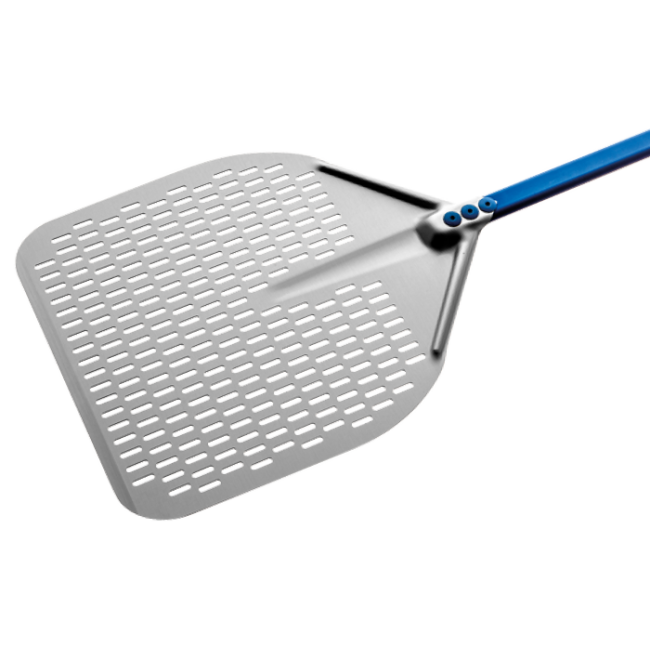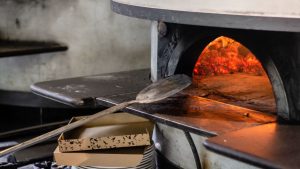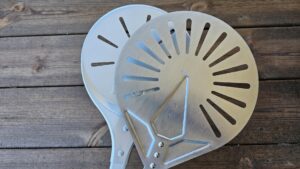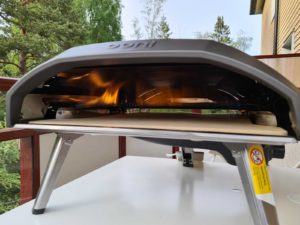You may have encountered a
What Is a Perforated Pizza Peel ?
The word “perforated” means a surface covered with small holes. So a perforated
This lightweight premium, anodized aluminum peel features a balanced 12x14-inch blade for effortless handling and a perforated surface to reduce sticking.
Perforated vs Non-Perforated Pizza Peel
Traditionally, non-perforated, solid pizza peels made from wood were used to transfer pizza. Pizza dough sticks less to wooden pizza peels than peels made from metal because the slightly rougher surface allows air to pass under the dough. This also results in less condensation (more on condensation later) when you take the hot pizza out of the oven. But wooden pizza peels have one huge drawback: they can’t be very thin.
Ideally, you want the
So the question is, is it possible to get the best of both worlds? A thin
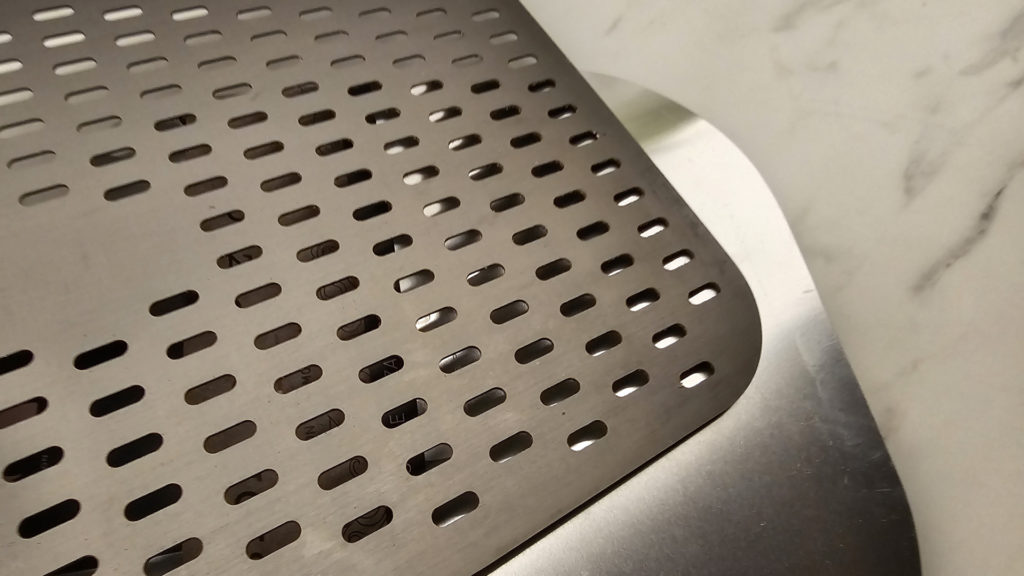
So, Is a Perforated Pizza Peel Better?
A perforated peel is the best choice if you want one
Perforated pizza peels also have a few other benefits over both wooden and non-perforated metal peels.
Why Use a Perforated Pizza Peel – The Benefits
The main benefits of a perforated peel are that it gets rid of excess flour, lets the pizza slide off the peel easily, and is the lightest option. In addition to that, it also causes less condensation and sticking.
Gets Rid of Excess Flour
As mentioned above, the main purpose of a perforated
When you’re baking pizza on a hot pizza stone or steel, you don’t want flour on the baking surface because it burns. Fine wheat flour, like Tipo 00, which you most commonly use for baking pizza, burns at fairly low temperatures. It’s this flour that causes trouble. Dusting your
Burnt wheat flour will make the oven smoky. The first time I used my
Burnt flour will result in more cleaning work when you’re done baking. The burnt flour tends to stick and can be a real pain to get rid of. Especially on an unglazed pizza stone. If you’re not able to clean the stone properly, the flour can keep smoking the next time you use the stone.
Less Contact Surface – Less Sticking
A perforated peel has a smaller surface that is in contact with the pizza dough. This means pizza is less likely to stick to a perforated
A smaller contact surface also means that you’ll need less flour when you’re dusting the peel. As I mentioned in the previous section, you want as little flour as possible in the hot oven. So in addition to removing more flour from the dough itself, the peel needs less flour due to the holes.
One thing to be aware of is the size of the holes. I’ve tried a cheap, no-name
Lower Weight
Perforated pizza peels are also lighter than solid pizza peels, due to less metal on the carrying surface. This will make it easier to use the peel.
Less Condensation – Crispier Pizza Crust
When you take a hot pizza out of the oven, you may have noticed that water sometimes is formed under the pizza. This moisture makes the pizza less crispy, or even soggy. Using a solid
The Best Perforated Pizza Peel
The Perforated Pizza Peel for Home Use – G.a Homefavor 12″ Perforated Pizza Peel
The best perforated
This lightweight premium, anodized aluminum peel features a balanced 12x14-inch blade for effortless handling and a perforated surface to reduce sticking.
G.a Homefavor Perforated
The
The G.a Homefavor 12″ Perforated
The Best Professional Perforated Pizza Peel
The best professional perforated
If you make a purchease through this link, we earn a small commission at no additional cost to you.
Gi. Metal is an Italian pizza tool manufacturer that makes equipment for professional pizzerias. They are well known for their quality products, especially amongst pizzerias around the world. Their pizza peels were also used during the AVPN Olympic Games.
Gi. Metal Aluminum rectangular perforated
How to Use a Perforated Pizza Peel
Using a perforated peel is not different from using a solid peel. I recommend preparing your pizza on the counter. Before topping the pizza, try to remove as much flour as possible from the dough. Even though the peel will help you get rid of more excess flour, you want as little as possible.
When your pizza is ready, simply drag it over to the peel, and transfer it into the oven. I recommend avoiding leaving the dough on the peel for too long. If you do, it is more likely to sink into the holes if it’s left there.
When the pizza is done, simply slide the peel under the pizza, and lift it out to a serving plate or cutting board. I don’t recommend cutting the pizza on the
If you want to about pizza peels and how to use them, have a look at the article: Pizza Peel: Everything You Need to Know.
Related
- Is Your Pizza Dough Too Dry? Here is How to fix it! - June 10, 2024
- The Ultimate Guide to the Pizza Dough Windowpane Test - June 8, 2024
- The Ultimate Guide to Autolyse Pizza Dough - June 7, 2024

